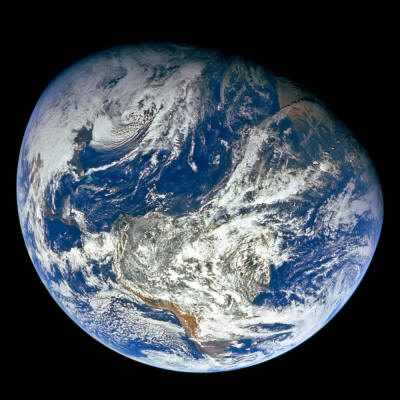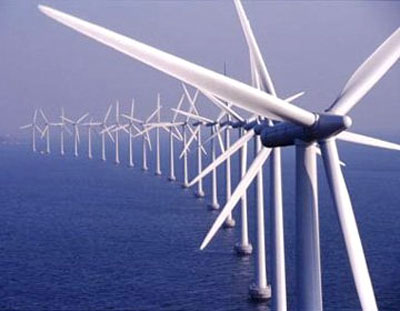
by Andrew Puhanic
from
TheGlobalistReport Website
Who are the Globalists and what is a Globalist?
April 2, 2012
The Globalist agenda is real and the Globalists themselves are the greatest
threat to human civilization. Every day, more and more people are affected
in some way, shape or form because of the Globalists and the Globalist
agenda.
In consideration of the entire Globalist plan, the Globalist ideology and
other Globalist propaganda, I think it’s time to redefine what a Globalist
is.
The most popular definition of what is a Globalist and who are the
Globalists so far is,
“the Globalist movement is an alliance based on
self-interests of the private international financiers and the royal,
dynastic and hereditary land owning families of Britain, Europe and America
which over the years have intermarried to create a self regenerating power
structure that through lies and deception seeks to control everything and
everyone”.
Although this definition of who and what is s Globalist is true, I think the
definition doesn’t go far enough to explain why the Globalists intend to
bring forth the
New World Order, why the Globalists exist and where the
Globalists intend the global community to be in 50, 100 and 200 years.
It’s also an appropriate
time to evaluate the standard definition of who are the Globalists as the
Globalists have now encroached in almost every country of the world.
Up until 30 years ago, the Globalists only had
an interest and presence in western countries and a limited number of
African and Asian countries.
A New Definition of Who Are The Globalists and
What Is A Globalist
After much consideration and thought,
I would like to propose to the activist, free thinking, and anti-Globalist
movements that we define the Globalists as:
The Globalists are a conglomerate of individuals, interest groups and large
corporations who actively seek to eliminate all countries to create a global
border-less society so that they can centralize, reduce and standardize all
economies, production and the processing of natural resources so that they
can directly control, manipulate and influence the decisions we make to
ensure they maintain their power, control, wealth and historical influence.
This new definition of who are the Globalists takes a broader view of why
they exist and why and for what purpose do they seek to implement their
Globalist agenda.
As this definition if who are the Globalists is new, I would like to hear
what your thoughts are and if you feel we can tweak the definition in any
way.
Globalist Agenda - Landscape versus the ‘Globalist’
Agenda
March 19, 2012
Globalists and The New World Order
Globalism can be defined as a mode of thought deriving from the practice of
thinking globally, both literally and figuratively.
Globalism not only informs major trends within
governance and economics, it also informs environmental issues, not least
those related to global warming. It will be argued, using the example of the
production of energy and power, that there may well be a built-in
contradiction between globalism and the interests of landscape as the
diverse place of people, polity and nature.
This study, written by Kenneth Olwig, questions the effects upon the
landscape of place and polity of a particular way of structuring the
understanding of the world that has been termed ‘globalism’.
Globalism implies an assumption that the Earth is a globe and that there is
a scalar spatial relation between the global and the local. This is
problematic, however, because the complex physical and social interactions
that take place on the Earth cannot be reduced to the common denominator of
scalar isotropic space.
The problem, however, is not just one of static
geometry, but also one of the temporal understanding of the cycle as a
circular process.
The hydrological and the carbon cycles take on
enormous ideological power when conceptualized as circular processes linking
the spheres of the heavens and the Earth. The most powerful form of the
cycle as circle, however, is that embodied in the eschatological idea that
the universe itself is doomed to a cyclical pattern of birth and apocalyptic
death.
The most problematic dimension of globalism may well be its implicit threat
that if we do not think globally and act locally the globe is doomed.
This can become a self-fulfilling prophecy, if
it is allowed to determine environmental and social policies that
oversimplify the shaping of the complex social and biotic realms that
constitute the Earth’s landscapes.
The Earth is not a globe.
The Globalist Cycle
Though the globe is a static spatial form it has a temporal equivalent in
the notion of the cycle.
The word ‘cycle’ comes from late Latin cyclus
and Greek kuklos, meaning ‘circle’. In Ptolemaic cosmography the
heavenly bodies of the cosmic spheres moved in circular orbits appropriate
to Plato’s notion of heavenly perfection.
Even though the term ‘cycle’ today does not, strictly speaking, require
circular movement in space, but rather just “a series of events that are
regularly repeated in the same order” (NOAD, 2005, cycle), the connotations
of circularity still adhere to the idea of the cycle.
The imaginative power of this circular motion is
reinforced by the circular shape of the global orb and the (apparently)
circular orbits of the heavenly bodies.
The hydrologic cycle is an ancient idea that
gained authority during the Enlightenment with the rise of modern science at
a time when it was also widely seen to reflect the teleological wisdom and
purpose of God and Nature due to its circular motion linking the heavens
with the Earth (Tuan, 1968).
Scientists today no longer think of the hydrologic cycle as having such a
simple structure (Linton, 2008), but the popular imagination is still
informed by ideas in which cycle and circle are linked and give meaning and
purpose to nature - as illustrated by the diagrams of giant circles of
arrows linking heaven and Earth found in Gore’s Inconvenient Truth (Gore,
2006).
In Globalist discourse, however, it is not water’s cleansing and refreshing
cycle that is in focus, but the cycle of ‘carbon’ which is much less well
understood, thereby opening the way for even more powerful imaginings of the
carbon cycle’s cyclical/circular nature.
When the carbon cycles are coupled with
cataclysmic scenes of destruction, images can be called forth, if only
subliminally, of Biblical Armageddon visions of flood and fire and other
cyclical doomsday visions of history.
Cyclical cosmography is related to a cyclical cosmology, which is concerned
with the origin and development of the universe, and hence with both
scientific and religious thought. The movement of the cosmic spheres was
thereby linked to a circular teleological conception of history in which the
world cycles between ages, each beginning and ending with revolutionary
cataclysms.
Similar ideas are found in apocalyptic
cosmology, as exemplified by the Biblical diluvian flood and the fire next
time, and in classical Greek thought (Lovejoy & Boas, 1935; Plato, 1961).
This kind of apocalyptic thinking can also be
found in the present-day concern with
climate change which, as the
anthropologist of science Joseph Masco has argued, has its origins in the
fire next time imaginaries generated by atomic testing and the threat of
atomic war.
As he puts it:

The first years of the Cold War were, in
short, a period in which the global biosphere was quite literally
militarized by the US nuclear state, but it was also positioned as a
comprehensive object of scientific research in the earth, atmospheric,
and biological sciences…
A nascent understanding of the impacts of
technology on the biosphere was established, formulating the research
questions that would ultimately inform a theory of climate change.
(Masco, 2010, p. 15)
Masco emphasizes, furthermore, that we are
dealing with a globalism that has its roots in the literal figure of the
map, the globe and its representation with the Apollo photographs of the
Earth (Masco, 2010).
The link between the apocalyptic imaginary and climate change gained its
full power with the image of the ‘nuclear winter’ projected by some of
America’s leading scientists, and which was compared to the imagined
destruction of the age of the dinosaurs due to the literally global impact
of an asteroid (Masco, 2010).
The link between nuclear attack and
environmental disaster, as Masco points out, persists for example in the
discourses surrounding the efficacy of the US’s Homeland Security agency in
the wake of Hurricane Katrina, and in innumerable Hollywood disaster movies.
The movie version of Gore’s illustrated lecture
and book
An Inconvenient Truth (Gore, 2006), likewise is full of apocalyptic
film footage; the movie’s trailer proclaiming that,
“This is by far the most terrifying film you
will ever see”.

The difficulty with the use of such imagery
is that though it may prove effective in the short run in generating
public concern, in the long run its playing upon global imaginaries of a
mythic and gargantuan sort leads to a politics which demands equally
gargantuan, and problematic, global solutions, such as huge atomic power
plants, mega-sized wind turbines and climate engineering, such as that
promoted by the skeptical environmentalist, Bjørn Lomborg.
(Fleming, 2010; Lomborg, 2010)
The nuclear winter generated by nuclear war was
the expected outcome of huge fires, and the resultant black carboniferous
smoke, blocking out the sun.
In present-day thinking this black smoke has
been replaced by a ghostly invisible form of carbon, CO2, that
has the reverse catastrophic effect of heating up the globe.
Global warming thus becomes a question of the
production of energy and power in an abstract global space.
Globalist thinking thus emphasizes the
production of energy and power leaving a carbon footprint in locations that
can be pinpointed within a circulation net located within isotropic
geometrical space that is scaled between the global and the local.
Furthermore, with this emphasis and spatial
structuring, Globalist discourse is also inevitably a discourse that elides
the distinction between the power of energy in the sense of physics, and the
globalized socio-political-economic power that accrues to those who control
the production of power (Commoner, 1976).
Globalist discourse has thus become a discourse of power, involving global
conferences making global decisions backed by globalized political and
economic power, which, as will be argued, can be against the interests of
landscape understood to be the diverse place of a polity and its environs.
The relationship between globalism, globalized power and landscape will be
shown in the following section with the aid of two illustrative cameo cases:
-
The first is taken largely from the conclusions
to a previous special issue of Landscape Research on ‘Landscapes of
Energies’ (Nadaï & van der Horst, 2010a)
-
The second is based largely on an
analysis of sources in magazines and newspapers reflecting the popular
debate concerning renewable energy in Denmark, a pioneer society in this
area
These cases illustrate how the Globalist
imaginary, and the power it helps generate, might conflict with the idea of
landscape as framed in the ELC.
Globalism and Power
The focus on the loci of power production, according to the socio-economist
Alain Nadaï and the geographer Dan van der Horst, leads to a:
recurrent tendency to centralize and
industrialize energies, by and for the virtues of economies of scale or
free market, so as to make them ‘Energy,’ a homogenous commodity that is
more easily traded and transferred.
The current rise of industrial wind power is
illustrative of this.
It is nowadays backed up by a global industry
producing turbines which have grown in size and capacity so as to match
the prevailing pattern of large scale plants producing hundreds or
thousands of megawatts of electricity.
(Nadaï & van der Horst, 2010b, p. 148)

This is a situation, however, which comes into
conflict with landscape since,
“the incentives such as ‘fixed tariffs’ or
‘green certificates,’ which are set in place for fostering the
development of new energies, generally do not account for landscapes”.
(Nadaï & van der Horst, 2010b, p. 149)
This is because:
Most of the assumptions and the
(mathematical) economic models underlying the design of energy policies
rely on the implicit assumption of an isotropic space, except for energy
gradients (e.g. solar power, wind speed, tidal currents…).
Landscape, by the virtue of its
heterogeneity, is resisting the universality of these views. It
introduces heterogeneity and uncertainty in the deployment of renewable
energies.
(Nadaï & van der Horst, 2010b, p. 149)
The basis for landscape’s ‘heterogeneity’ lies
in the fact that its energy is not just something that is produced at
certain localizable points of power.
Landscape, as a social and material phenomenon,
is energy and power (Mitchell, 2007). It is energy because the shaping of
the material landscape requires the use of forms of energy ranging from the
energy of thought and movement embodied in humans and animals to the energy
embodied in the soil, in slopes, in drainage, in hedge and tree growth, etc.
Once energy has become embodied in the landscape
of a place through the activities of people and polities, for example, as a
terraced field or a shelterbelt, it becomes a source of productive and
consumptive energy for perhaps centuries.
It is, as Nadaï and van der Horst write,
something that,
“can be invested or embodied in landscapes
when they have been consumed in order to shape, to build or to maintain
landscapes”.
(Nadaï & van der Horst, 2010b, p. 148)
“In such cases,” they argue, “energies have
become part of the landscape”.
(Nadaï & van der Horst, 2010b, p.146)
As they put it, energies underlie,
“the mechanical work and the trophic
processes which endow landscapes with their current materiality. They
are part of landscapes as a quality but they require measures, codes,
norms and conventions to become perceptible”.
(Nadaï & van der Horst, 2010b, p. 146)
The character of the use, non-use, conservation
or storage of energy, as exemplified by the design, construction, insulation
and placement of buildings in the landscape, is thus as critical to the
health of the environment as the production of energy.
As Amory Lovins, of the Rocky Mountain
Institute, points out, the resulting ‘energy efficiency’ from such measures,
“is generally the largest, least expensive,
most benign, most quickly deployable” means of reducing energy related
environmental threats, but it is also the “least visible, least
understood, and most neglected way to provide energy services”.
(Lovins, 2004, p. 384)
Note: To read the full
article, please read the following: Olwig, R. K (2011)
The Earth is Not a Globe - Landscape versus the
‘Globalist’ Agenda, Landscape Research, Volume 36, Issue 4, 2011



